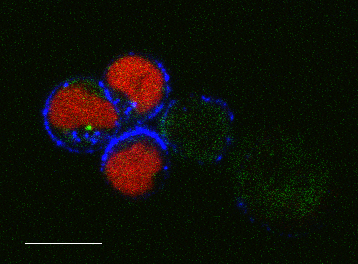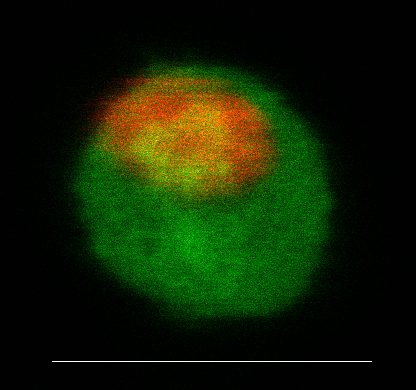|
Mathematics and the immune system
|
A cornerstone of the body's defenses is the adaptive immune
response. When exposed to foreign material, it generates
a sizable collection of cells specific to the given infection
through a process called clonal selection. While the overall
population dynamics of this response is known, how individual
cells make decisions to divide, fight or die is poorly
understood. Enhancing our understanding of cellular
decision-making processes is key to manipulating immune
response to enhance protection or damp auto-immunity.
Since the introduction of Clonal Selection Theory in 1959
by the Australian Nobel Laureate, Macfarlane Burnet, and
the identification of lymphocytes as key players in immunity,
much evidence has been garnered as to the behavior of the
immune response. Recent advances in quantitative experimental
technologies are revealing ever more involved patterning
in this system that no longer fit simple descriptions. In
conjunction with experimental partners world-wide, members
of the Hamilton Institute are applying mathematical
methodologies to help pick apart and decipher this complex
system, which is so significant for human health.
|

B cells from a Blimp FR mouse, transgenic for Blimp1-GFP (green,
cytoplasmic) and Fucci Red (nuclear, G1 phase of the cell cycle),
stained with IgG1-APC (blue, on membrane surface). Scale bar is
10um. Image courtesy of Jie H. S. Zhou of the
Hodgkin Lab., WEHI.
|
|
We are developing theories, heavily informed by cutting edge
experimental evidence, based on a paradigm shift:
that cells actively exploit, rather than suffering
from, randomness to achieve their goals and this is not
inconsistent with repeatable, predictable population-level
dynamics. The primary aim of this theory is to gain an
operational understanding of the immune response and its
regulators at the cellular level. The ultimate hope is that
it will enable extrapolations of medical significance.
|

B cell from a Blimp FR mouse, transgenic for Blimp1-GFP (green,
cytoplasmic) and Fucci Red (nuclear, G1 phase of the cell cycle),
Scale bar is 10um. Image courtesy of Jie H. S. Zhou of the
Hodgkin Lab., WEHI.
|
Current Projects
"Quantitative T Cell Immunology",
European Union Marie Curie ITN, 2013-2017.
Co-PIs at: BTS, Charite, DKFZ, INSERM, Leeds (coordinator),
NKI, NUIM (Hamilton Institute), NUIG, Pasteur UCL, Utrecht and UMCU.
Associated partners at: AstraZeneca, Microsoft Research Cambridge,
TalaveraScience, Unilever, Universidad de Vigo and WEHI.
"Indo-European Research Network in Mathematics for Health and Disease",
European Union Marie Curie IRSES, 2013-2017.
Co-PIs at: Basel, Leeds (coordinator), NUIM, Pontificia Comillas,
UCL, Utrecht, Vigo. Associated partners: Hyderabad, Institute of
Math Sciences Chennai, IIS Bangalore, Jawaharlal Nehru, MIT, National
Institute of Immunology (Delhi) UBC, WEHI.
"Single cell lineage tracing to understand hematopoietic development
and differentiation",
Human Frontier Science Program Grant, 2012-2015.
Co-PIs at:
Drexel, NUIM (Hamilton Institute), NKI and WEHI.
|


